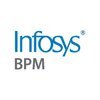Filter interviews by
WebAppMate Fly Interview Questions and Answers
Be the first one to contribute and help others!
Interview questions from similar companies

Diploma Electrical Engineer Interview Questions & Answers
Larsen & Toubro Limitedposted on 27 Jan 2025
Diesel Generator: A Reliable Power Source
A diesel generator is a self-contained power generating unit that combines a diesel engine with an electric generator (often an alternator). It's a versatile and widely used source of electricity, particularly in situations where a reliable power supply is crucial.
How Diesel Generators Work
* Diesel Engine: The diesel engine, fueled by diesel fuel, acts as the prime mover. It converts the chemical energy of the fuel into mechanical energy through combustion.
* Electric Generator: The mechanical energy from the engine is transferred to the generator, which converts it into electrical energy. This electrical energy can then be used to power various appliances and equipment.
Applications of Diesel Generators
* Backup Power: Diesel generators are commonly used as backup power sources for homes, businesses, hospitals, and critical infrastructure during power outages.
* Remote Locations: In areas with limited or no access to the grid, diesel generators provide a reliable source of electricity for various applications.
* Construction Sites: Diesel generators power tools and equipment on construction sites, ensuring work can continue even in remote locations.
* Off-Grid Living: Individuals living off the grid often rely on diesel generators for their electricity needs.
* Data Centers: Diesel generators provide backup power to ensure the continuous operation of critical data centers.
Advantages of Diesel Generators
* Reliability: Diesel engines are known for their durability and reliability, making them suitable for demanding applications.
* Fuel Efficiency: Modern diesel engines offer excellent fuel efficiency, reducing operating costs.
* Wide Power Range: Diesel generators are available in a wide range of sizes and power capacities, catering to various needs.
* Easy Maintenance: Diesel generators are relatively easy to maintain and service.
Disadvantages of Diesel Generators
* Noise: Diesel generators can be noisy, which may be a concern in certain settings.
(3 Questions)
- Q1. Transformer & protection
- Q2. Breaker & protection
- Q3. Motor panel Feeder & protection
(2 Questions)
- Q1. Motor & Motor protection
- Q2. All types panel & protection
- Ans.
Panel and protection systems are essential components in electrical engineering for controlling and safeguarding electrical circuits.
Different types of panels include distribution panels, control panels, and instrumentation panels.
Protection systems include overcurrent protection, earth fault protection, and differential protection.
Panels are used to house electrical components and provide a safe environment for operat...

Construction Management Interview Questions & Answers
Reliance Industriesposted on 8 Feb 2025
I was interviewed in Jan 2025.
(2 Questions)
- Q1. LIGHTUP YOUR SELF.?
- Ans.
I am a motivated and dedicated individual with a passion for construction management.
I have a strong background in construction and project management.
I am detail-oriented and have excellent organizational skills.
I am a team player and have experience working with diverse teams.
I am always looking for opportunities to learn and grow in the field of construction management.
- Q2. THEY ASKED ME FOR TECHANICALY QUESTION. OF PIPING of oil & GAS FIELD.
(2 Questions)
- Q1. HOWMANY TYPES OF SUPPORT TYPES ARE USED FOR PIPING FIXING ?
- Ans.
There are several types of support types used for piping fixing, including clamps, hangers, and anchors.
Clamps are used to hold pipes in place and prevent movement.
Hangers are used to support the weight of the pipes from above.
Anchors are used to secure pipes to a structure to prevent movement.
Other types of support types include guides, shoes, and struts.
- Q2. What types of activities have you engaged in, including planning, managing piping material issues for contracts, fabrication, welding, inspection work, erection, mechanical completion, inspection clearance...
- Ans.
I have extensive experience in planning, managing, and executing various activities related to piping material issues for contracts, fabrication, welding, inspection work, and mechanical completion in the construction industry.
Engaged in planning and managing piping material issues for contracts
Worked with materials such as carbon steel, alloy steel, stainless steel, and cast iron water pipelines
Provided services invol...
(2 Questions)
- Q1. IN THE LAST , I ASKED IS THER ANY MORE QUESTION OR ANY CLEARIFICATION FROM YOUR SIDE.?
- Q2. SALARY PART DISCUSSION..
Interview Preparation Tips

I was interviewed in Jan 2025.
(5 Questions)
- Q1. Could you elaborate on your roles and responsibilities in your previous employment?
- Q2. What was your role in the project, specifically related to data transformation and dashboard creation?
- Q3. How do you optimize and manage large datasets, and what data sources do you utilize to obtain this data?
- Q4. Guesstimates like how many traffic signals are there in Noida.
- Q5. The interviewer asked SQL questions related to window functions, joins, and advanced aggregations, such as running sum and rolling sum.
(1 Question)
- Q1. Second round is also a technical round and similar to first round . Medium to high level sql questions and questions related to the project you're working on and Guesstimates will be asked by the interview...
(1 Question)
- Q1. Project manager will take the third round interview and inquire about your knowledge of the company, and some technical and scenario-based questions related to decision-making and problem-solving approach.
(1 Question)
- Q1. Final round will be an HR round.
Interview Preparation Tips

(2 Questions)
- Q1. Azure cloud platform tech
- Q2. Informatica tech stack ques
(2 Questions)
- Q1. Adf tech stack que
- Q2. Scd type 2 implementation
- Ans.
SCD Type 2 implementation involves tracking historical changes in data by creating new records for each change.
Identify the columns that need to be tracked for changes
Add effective start and end dates to track the validity of each record
Insert new records for changes and update end dates for previous records
Maintain a surrogate key to uniquely identify each version of the record
(2 Questions)
- Q1. Dw related que ans
- Q2. Solution design related que
(2 Questions)
- Q1. Aspiration from my end
- Q2. How soon can join
- Ans.
I can join the team within 2 weeks.
I can start within 2 weeks of receiving the offer.
I need to give notice to my current employer.
I may need to relocate, which could affect my start date.
Interview Preparation Tips
Then after putting my lot of time and efforts when finally it comes to release the offer, then they stop picking up the calls and stop responding and the final excuses which I got from them for not releasing the offer is that their software will not allow them to release any offer which is more that 2 days of joining.
Such a pathetic company who even don't know that atleast if you are not releasing the offer, it's your duty to atleast tell the person that either they are not able to provide the compensation as discussed or they are looking parallelly for someone who can settle in less compensation.
Due to all this I have wasted almost my 3-4 weeks of time expecting that I will receive the offer, and didn't focus on other organisations which was ready to provide slightly lower than this.
Hence it's a total scam which is going here suggesting not to get trapped otherwise you will not only waste your time but also other good opportunities as well.
It's a total boycott for me, expecting the same from your end as well, so that they will understand that playing with someone's job is not a joke.
Skills evaluated in this interview

Infrastructure Management Consultant Interview Questions & Answers
Infosysposted on 2 Feb 2025
(2 Questions)
- Q1. What are your salary expectations?
- Q2. What has been your experience in each of the companies you have worked for?
(4 Questions)
- Q1. Can you tell me about yourself?
- Q2. Could you briefly describe the companies you have worked for?
- Q3. What technologies have you worked with, and what was your role in each?
- Q4. What are some use case studies related to the technologies you have worked with?
Interview Preparation Tips

Senior Sales Associate Interview Questions & Answers
Indiamart Intermeshposted on 9 Feb 2025
(5 Questions)
- Q1. Face to face interview
- Q2. What criteria are used to shortlist students?
- Q3. Master degree in eligibility
- Q4. Communication skills good
- Q5. Marketing field
Interview Preparation Tips
Research the company, anticipate common questions, and practice your responses.
Network
Attend industry events, join professional associations, and use online platforms to connect with professionals.
Follow up
Send a thank you note after meeting someone at a networking event, interviewing, or discussing business with a potential client.
Customize your application
Tailor your cover letter and resume to each job you apply for.
Keep learning
Learn new skills related to your profession to improve your confidence and energize yourself.
Establish an online presence
Optimize your LinkedIn profile and other relevant social media profiles.
Define your goals
Understand yourself, your strengths, and what type of work setting brings out your best.
Go to career fairs
Job fairs are a great opportunity to network with companies and learn about new opportunities

For example, a ₹10 LPA CTC could mean an in-hand salary of ₹70,000–₹75,000 per month, depending on deductions and benefits.
✨ 𝗣𝗿𝗼 𝗧𝗶𝗽: Always request a detailed salary structure during negotiations—it’s your roadmap to making informed decisions
𝗖𝗧𝗖 𝘃𝘀 𝗜𝗻-𝗛𝗮𝗻𝗱 𝗦𝗮𝗹𝗮𝗿𝘆: 𝗧𝗵𝗲 𝗥𝗲𝗮𝗹𝗶𝘁𝘆 𝗖𝗵𝗲𝗰𝗸 𝗘𝘃𝗲𝗿𝘆 𝗣𝗿𝗼𝗳𝗲𝘀𝘀𝗶𝗼𝗻𝗮𝗹 𝗡𝗲𝗲𝗱𝘀!
We’ve all been there—excitedly discussing job offers and hearing about the impressive CTC (Cost to Company). But when payday arrives, you wonder
(2 Questions)
- Q1. 2️⃣ 𝗜𝗻-𝗛𝗮𝗻𝗱 𝗦𝗮𝗹𝗮𝗿𝘆: This is the actual amount you take home after deductions like: • Employee’s contribution to PF • Income tax (TDS) • Professional tax
- Q2. 𝗖𝗧𝗖 𝘃𝘀 𝗜𝗻-𝗛𝗮𝗻𝗱 𝗦𝗮𝗹𝗮𝗿𝘆: 𝗧𝗵𝗲 𝗥𝗲𝗮𝗹𝗶𝘁𝘆 𝗖𝗵𝗲𝗰𝗸 𝗘𝘃𝗲𝗿𝘆 𝗣𝗿𝗼𝗳𝗲𝘀𝘀𝗶𝗼𝗻𝗮𝗹 𝗡𝗲𝗲𝗱𝘀! We’ve all been there—excitedly discussing job offers and hearing about the impressi...
Interview Preparation Tips
We’ve all been there—excitedly discussing job offers and hearing about the impressive CTC (Cost to Company). But when payday arrives, you wonder:
“𝘞𝘩𝘺 𝘥𝘰𝘦𝘴𝘯’𝘵 𝘮𝘺 𝘪𝘯-𝘩𝘢𝘯𝘥 𝘴𝘢𝘭𝘢𝘳𝘺 𝘮𝘢𝘵𝘤𝘩 𝘵𝘩𝘦 𝘊𝘛𝘊 𝘐 𝘸𝘢𝘴 𝘱𝘳𝘰𝘮𝘪𝘴𝘦𝘥?”

Assistant Manager Operations Interview Questions & Answers
Infosys BPMposted on 23 Jan 2025
I was interviewed in Dec 2024.
(2 Questions)
- Q1. What is your notice period, and what is your current salary?
- Ans.
My notice period is 1 month, and my current salary is $60,000 per year.
Notice period is 1 month
Current salary is $60,000 per year
- Q2. What is your notice period?
- Ans.
My notice period is one month.
Notice period is one month
Standard notice period in the industry
Can be negotiable based on circumstances
(6 Questions)
- Q1. What is an amortization entry?
- Ans.
An amortization entry is a financial transaction that spreads the cost of an intangible asset over its useful life.
Amortization entries are used to gradually reduce the value of intangible assets on the balance sheet.
They are typically recorded as a debit to amortization expense and a credit to the intangible asset account.
Examples of intangible assets that may require amortization entries include patents, trademarks,
- Q2. What is the process for recording a depreciation entry in accounting?
- Ans.
Depreciation entry in accounting involves allocating the cost of an asset over its useful life.
Calculate the depreciation expense using a chosen method (straight-line, double-declining balance, units of production, etc.)
Debit the depreciation expense account and credit the accumulated depreciation account
Adjust the book value of the asset on the balance sheet
Repeat the process each accounting period until the asset is
- Q3. What are the types of reconstruction currently being undertaken?
- Ans.
Types of reconstruction currently being undertaken include urban, environmental, and infrastructure reconstruction.
Urban reconstruction - rebuilding of cities and towns after natural disasters or conflicts
Environmental reconstruction - restoration of ecosystems and habitats
Infrastructure reconstruction - repairing or upgrading of roads, bridges, and utilities
Examples: rebuilding of New Orleans after Hurricane Katrina, ...
- Q4. What is your reason for seeking a job change?
- Ans.
Seeking new challenges and growth opportunities in a dynamic work environment.
Looking for new challenges and opportunities for growth
Seeking a more dynamic work environment
Interested in taking on more responsibilities as an Assistant Manager
- Q5. What automation ideas have you implemented or suggested in your current processes?
- Ans.
Implemented automation ideas include introducing automated email notifications for order status updates and setting up automated data backups.
Introduced automated email notifications for order status updates to improve communication with customers
Set up automated data backups to ensure data security and prevent loss
Suggested implementing automated inventory management system to streamline operations and reduce manual e
- Q6. What is the accounting entry for prepaid expenses?
- Ans.
Prepaid expenses are assets paid for in advance but not yet used, so the accounting entry involves debiting an asset account and crediting a liability account.
Debit the Prepaid Expense account (asset account) to increase its balance
Credit the Cash/Bank account or Accounts Payable account to decrease the balance
As the prepaid expense is used up, it is recognized as an expense on the income statement
Examples: Prepaid ren
(8 Questions)
- Q1. What is the amortization entry?
- Ans.
Amortization entry is a financial accounting process of spreading the cost of an intangible asset over its useful life.
Amortization entry is used to allocate the cost of intangible assets such as patents, copyrights, and trademarks over their useful life.
It helps in matching the expense of the asset with the revenue it generates.
The entry typically involves debiting amortization expense and crediting accumulated amorti...
- Q2. What is your understanding of Lean?
- Ans.
Lean is a methodology focused on maximizing customer value while minimizing waste.
Lean is about continuously improving processes to eliminate waste and increase efficiency.
It involves identifying value from the customer's perspective and streamlining operations to deliver that value.
Lean principles include Kaizen (continuous improvement), Just-in-Time production, and Jidoka (automation with a human touch).
Examples of L...
- Q3. What is your understanding of Six Sigma
- Ans.
Six Sigma is a data-driven methodology used to improve processes by reducing defects and variations.
Six Sigma aims to achieve near perfection in processes by identifying and eliminating causes of defects or errors.
It uses statistical tools and techniques to measure and analyze process performance.
The goal of Six Sigma is to reduce variation and improve efficiency, ultimately leading to cost savings and customer satisfa...
- Q4. What are the techniques used in Six Sigma?
- Ans.
Six Sigma techniques include DMAIC, Lean Six Sigma, Root Cause Analysis, and Statistical Process Control.
DMAIC (Define, Measure, Analyze, Improve, Control) is a structured problem-solving methodology used to improve processes.
Lean Six Sigma combines Six Sigma methods with Lean manufacturing principles to reduce waste and improve efficiency.
Root Cause Analysis is a technique used to identify the underlying cause of a pr...
- Q5. What is a service level?
- Ans.
A service level is a metric used to measure the performance of a service provider in meeting customer expectations.
Service level agreements (SLAs) define the expected level of service to be provided
Service levels are often expressed as a percentage of time that a service is available or delivered within a certain timeframe
Monitoring and reporting on service levels helps identify areas for improvement
Example: A service ...
- Q6. What are Service Level Agreements (SLAs)?
- Ans.
SLAs are agreements between a service provider and a customer that outline the level of service expected.
SLAs define the scope, quality, and responsibilities of the service provider.
They include metrics such as response time, resolution time, and uptime guarantees.
Penalties may be specified for failing to meet SLA requirements.
Examples include a web hosting company guaranteeing 99.9% uptime or a call center promising t
- Q7. What automation ideas have you proposed for the current processes?
- Ans.
I have proposed implementing robotic process automation (RPA) for repetitive tasks, using workflow automation tools, and integrating AI for data analysis.
Proposed implementing robotic process automation (RPA) for repetitive tasks to increase efficiency
Suggested using workflow automation tools to streamline processes and reduce manual errors
Recommended integrating AI for data analysis to improve decision-making and fore
- Q8. What is the case study regarding the entry for accrued expenses?
- Ans.
Accrued expenses refer to expenses that have been incurred but not yet paid.
Accrued expenses are recorded as liabilities on the balance sheet.
They are typically recognized at the end of an accounting period.
Examples include accrued salaries, interest, and utilities.
Accrued expenses are important for accurate financial reporting.
Interview Preparation Tips

I was interviewed in Dec 2024.
(22 Questions)
- Q1. API Gateway implementation
- Ans.
API Gateway implementation is a centralized service that routes, manages, and secures API calls.
API Gateway acts as a single entry point for all API calls
It can handle authentication, rate limiting, caching, and request/response transformations
Examples include AWS API Gateway, Apigee, Kong
- Q2. Circuit breaker implementation
- Ans.
Circuit breaker is a design pattern used to prevent system overload by temporarily stopping requests to a failing service.
Circuit breaker monitors requests to a service and opens when the service fails repeatedly.
It helps prevent cascading failures and allows the system to gracefully degrade.
Once the circuit breaker is open, it can periodically check if the service has recovered before allowing requests again.
- Q3. What is deadlock? How to avoid it?
- Ans.
Deadlock is a situation in which two or more processes are unable to proceed because each is waiting for the other to release a resource.
Avoid circular wait by ensuring processes request resources in the same order.
Prevent hold and wait by requiring processes to request all needed resources at once.
Implement a timeout mechanism to break potential deadlocks.
Use resource allocation graphs to detect and prevent deadlocks.
...
- Q4. Explain equals() method
- Ans.
The equals() method is used to compare the contents of two objects for equality.
The equals() method is a method of the Object class in Java.
It is used to compare the contents of two objects for equality.
The default implementation of equals() in the Object class compares memory addresses, so it is often overridden in custom classes to compare content.
Example: String class overrides equals() method to compare the content
- Q5. How mongodb was integrated in your application?
- Ans.
MongoDB was integrated in the application by using the official Java driver and configuring connection settings.
Used the official MongoDB Java driver to interact with the database
Configured connection settings such as host, port, database name, and authentication credentials
Implemented CRUD operations using MongoDB Java driver methods
Utilized MongoDB aggregation framework for complex queries
- Q6. What is hibernate?
- Ans.
Hibernate is an open-source Java framework that simplifies the development of database interactions in Java applications.
Hibernate is an Object-Relational Mapping (ORM) tool that maps Java objects to database tables.
It provides a way to perform database operations using Java objects instead of writing SQL queries.
Hibernate handles the mapping of Java classes to database tables and vice versa, as well as the generation ...
- Q7. Runnable vs Callable interface
- Ans.
Runnable is a functional interface with a single run() method, while Callable is a functional interface with a single call() method.
Runnable is used for tasks that do not return a result, while Callable is used for tasks that return a result.
Callable can throw checked exceptions, while Runnable cannot.
Callable returns a Future object, which can be used to retrieve the result of the computation.
Example: Runnable - execu...
- Q8. Which type of data is returned by Callable interface?
- Ans.
The Callable interface in Java returns a Future object.
Callable interface returns a Future object which represents the result of a computation that may not be available yet.
The Future object can be used to retrieve the result of the computation, check if it is done, or cancel the computation.
Example: Callable<Integer> task = () -> { return 42; }
- Q9. HashMap internal working
- Q10. Concurrent HashMap internal working
- Q11. How to monitor health of your application?
- Ans.
Monitor application health using metrics, logs, alerts, and performance monitoring tools.
Use monitoring tools like Prometheus, Grafana, or New Relic to track key metrics such as CPU usage, memory usage, response times, and error rates.
Implement logging to record important events and errors in your application. Use tools like ELK stack (Elasticsearch, Logstash, Kibana) for log analysis.
Set up alerts to notify you of any...
- Q12. How to call an API in a Microservice architecture?
- Ans.
To call an API in a Microservice architecture, use HTTP requests or messaging protocols like gRPC.
Use HTTP requests to communicate between microservices
Implement RESTful APIs for easy integration
Leverage messaging protocols like gRPC for efficient communication
Consider using service discovery mechanisms for dynamic API calls
- Q13. Explain Profiles
- Ans.
Profiles in Java are configurations that define the capabilities of a Java platform.
Profiles allow developers to target specific types of devices or applications.
They help in reducing the size of the Java runtime environment by including only the necessary APIs.
Examples include Java SE Embedded Profile for embedded devices and Java SE Compact Profile for resource-constrained environments.
- Q14. What is OpenFeign, and how is it used in microservices architecture?
- Ans.
OpenFeign is a declarative web service client used to simplify the process of making HTTP requests in microservices architecture.
OpenFeign allows developers to define RESTful web services as interfaces and automatically generate the necessary implementation code.
It integrates seamlessly with Spring Cloud and other microservices frameworks to facilitate communication between services.
OpenFeign supports features like loa...
- Q15. What is the implementation process for service registry and discovery?
- Ans.
Service registry and discovery involves registering services and allowing clients to discover and connect to them.
Implement a service registry where services can register themselves with metadata
Use a service discovery mechanism for clients to find and connect to services
Implement health checks to ensure services are available and healthy
Use a load balancer to distribute traffic among multiple instances of a service
- Q16. What are Spring boot actuators?
- Ans.
Spring Boot Actuators are built-in tools that provide insight into the running application.
Actuators expose various endpoints to monitor and manage the application.
They can be used to check health, metrics, environment details, and more.
Examples include /actuator/health, /actuator/metrics, and /actuator/env.
- Q17. Synchronous vs Asynchronous communication
- Ans.
Synchronous communication is blocking, while asynchronous communication is non-blocking.
Synchronous communication waits for a response before continuing, while asynchronous communication does not wait.
Examples of synchronous communication include traditional function calls, while examples of asynchronous communication include callbacks and promises.
Synchronous communication can lead to performance issues if there are d...
- Q18. Explain Synchronized keyword
- Ans.
Synchronized keyword is used in Java to control access to shared resources by multiple threads.
Synchronized keyword can be applied to methods or code blocks to ensure only one thread can access the synchronized code at a time.
It prevents race conditions and ensures thread safety by creating a lock on the object or class.
Example: synchronized void myMethod() { // synchronized code block }
- Q19. What are the consequences of excessively using synchronized blocks and methods in Java?
- Ans.
Excessive use of synchronized blocks and methods in Java can lead to performance issues and potential deadlocks.
Decreased performance due to increased contention for locks
Potential deadlocks if multiple threads are waiting for each other to release locks
Increased complexity and difficulty in debugging and maintaining code
Use synchronized sparingly and consider alternatives like ConcurrentHashMap or Lock interface
- Q20. How can you determine the number of threads needed for your application?
- Ans.
The number of threads needed for an application can be determined based on factors like the type of tasks, hardware resources, and performance requirements.
Consider the type of tasks your application needs to perform - CPU-bound tasks may benefit from more threads, while I/O-bound tasks may not.
Take into account the hardware resources available - more threads may be beneficial on a multi-core processor compared to a si...
- Q21. Explain Executor framework
- Ans.
Executor framework is a framework in Java that provides a way to manage and execute tasks asynchronously.
Allows for managing thread execution in a more efficient way
Provides a way to decouple task submission from task execution
Supports various types of executors like ThreadPoolExecutor and ScheduledExecutorService
Helps in handling tasks concurrently and asynchronously
- Q22. Explain BlockingQueue
- Ans.
BlockingQueue is an interface in Java that represents a queue which supports operations that wait for the queue to become non-empty when retrieving an element and wait for space to become available in the queue when adding an element.
BlockingQueue is part of the java.util.concurrent package.
It is used for implementing producer-consumer scenarios where multiple threads are involved.
Methods like put() and take() are used...
(2 Questions)
- Q1. Why did you leave your previous company?
- Ans.
Seeking new challenges and opportunities for growth.
Desire for career advancement
Looking for new challenges
Seeking better work-life balance
Company restructuring or downsizing
Relocation to a new area
- Q2. Other basic questions asked regarding the relevant skills and technologies I have worked with.

This was a multiple-choice exam, and the questions were related to English, mathematics, and reasoning.
(3 Questions)
- Q1. Technical questions related to paints chemistry
- Q2. What are pigments and what are the types of pigments and what are resins
- Q3. What is capillary action and what is PH value
(1 Question)
- Q1. This was with regional manager
WebAppMate Fly Interview FAQs
Tell us how to improve this page.
Interview Questions for Popular Designations
- Design Engineer Interview Questions
- Software Engineer Interview Questions
- Intern Interview Questions
- Senior Associate Interview Questions
- Senior Engineer Interview Questions
- Consultant Interview Questions
- Graduate Engineer Trainee (Get) Interview Questions
- Test Engineer Interview Questions
- Show more
Interview Questions from Similar Companies
WebAppMate Fly Reviews and Ratings
based on 9 reviews
Rating in categories
|
Senior Software Developer
7
salaries
| ₹6.6 L/yr - ₹16.7 L/yr |
|
Software Developer
6
salaries
| ₹3.6 L/yr - ₹7.7 L/yr |
|
UI Developer
5
salaries
| ₹2 L/yr - ₹4.2 L/yr |
|
HR Manager
4
salaries
| ₹3 L/yr - ₹5.1 L/yr |
|
Magento Developer
4
salaries
| ₹3.7 L/yr - ₹7.2 L/yr |

Web Solutions
Webtech Solutions

Codemasters

Bajaj Finance
- Home >
- Interviews >
- WebAppMate Fly Interview Questions












